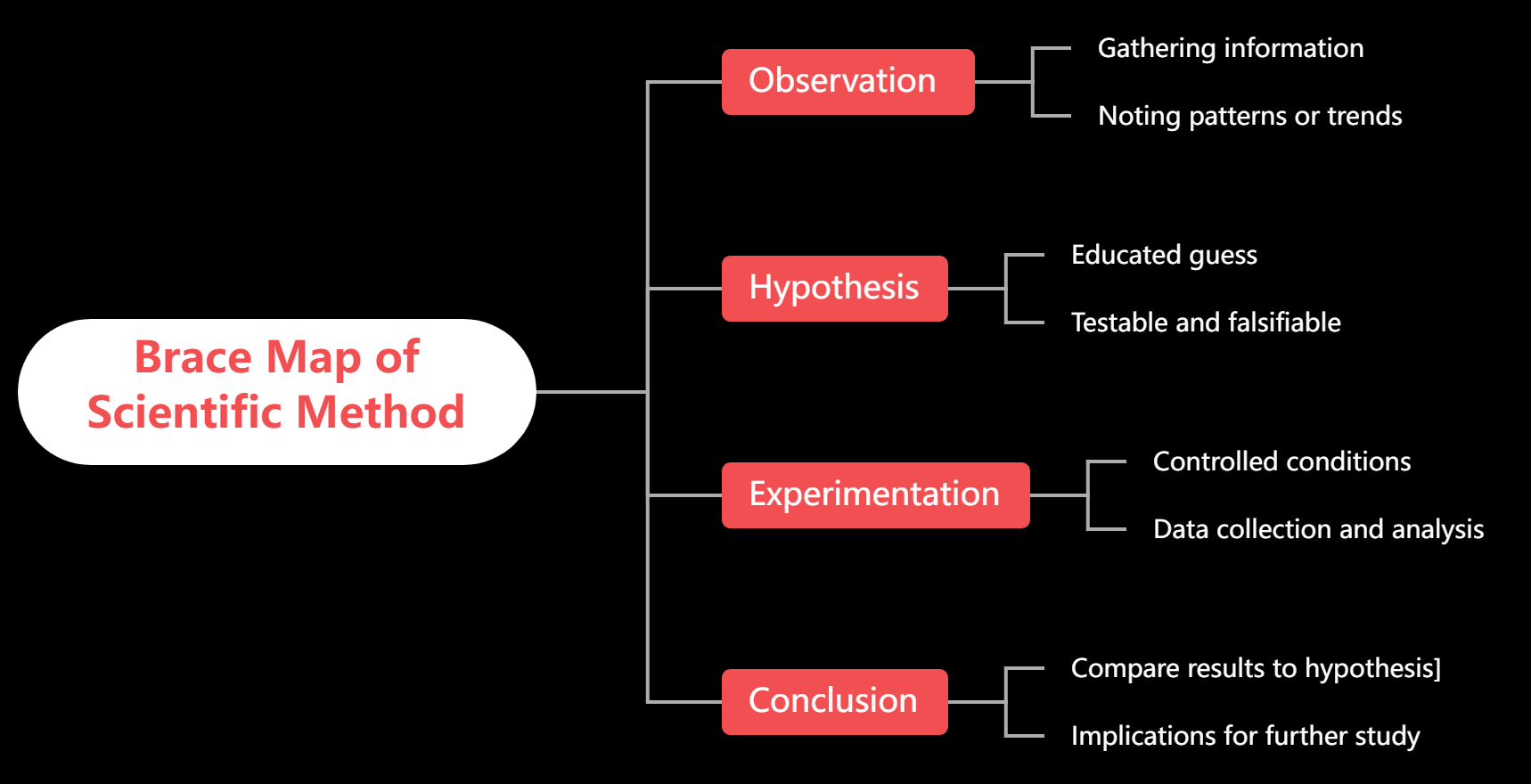
Explain Scientific Method with Brace Map
The Brace Map of the Scientific Method offers a structured exploration of the key stages involved in the scientific inquiry process. The mind map is organized into four main sections: Observation, Hypothesis, Experimentation, and Conclusion. Beginning with Observation, the map emphasizes the importance of gathering information and noting patterns or trends as a foundational step in scientific inquiry. The Hypothesis section highlights the significance of forming an educated guess that is both testable and falsifiable, providing a clear direction for experimentation. In the Experimentation phase, the map underscores the necessity of conducting experiments under controlled conditions, accompanied by rigorous data collection and analysis. Finally, the Conclusion section encapsulates the scientific method by encouraging researchers to compare results to their hypothesis, drawing implications for further study. This Brace Map serves as a valuable visual guide for students and researchers, enhancing their understanding of the systematic and logical approach involved in the scientific method, from observation to drawing meaningful conclusions.
Importance of the Stages
The scientific method is an indispensable and systematic approach that underpins the progress of scientific inquiry and the advancement of knowledge. Its importance lies in its structured and objective nature, providing a reliable framework for investigating and understanding the natural world. Beginning with observation, the scientific method encourages researchers to keenly gather information and identify patterns, setting the stage for forming informed hypotheses. The hypothesis, as an educated guess, guides experimentation by being both testable and falsifiable, ensuring the rigor and validity of the scientific process. Experimentation, conducted under controlled conditions, allows for the collection of data and the objective analysis of results. The conclusion phase, where results are compared to the initial hypothesis, not only validates or refutes the hypothesis but also provides a foundation for further study and exploration. By adhering to the scientific method, researchers contribute to the cumulative body of knowledge, fostering a reliable and evidence-based understanding of the world around us. In essence, the scientific method serves as the bedrock of scientific progress, ensuring rigor, objectivity, and reproducibility in the pursuit of knowledge.
Streamlining Visual Communication with Abundant Templates
Visual Paradigm Smart Board stands out as a versatile and user-friendly tool designed to elevate visual communication and idea generation. With its intuitive interface and dynamic features, Visual Paradigm Smart Board empowers users to create compelling diagrams, charts, and mind maps effortlessly. One of its notable strengths lies in the abundance of templates it provides, including those for mind maps, flowcharts, and various diagram types. These templates serve as invaluable starting points, streamlining the creative process and offering users the flexibility to customize their visuals according to specific needs. Whether you’re a student looking to enhance presentations, a professional seeking efficient project planning, or an educator aiming to enrich classroom discussions, Visual Paradigm Smart Board offers a comprehensive toolkit that simplifies the creation of visual aids, fostering effective communication. Explore the multitude of templates available and unlock the full potential of your ideas with Visual Paradigm Smart Board.